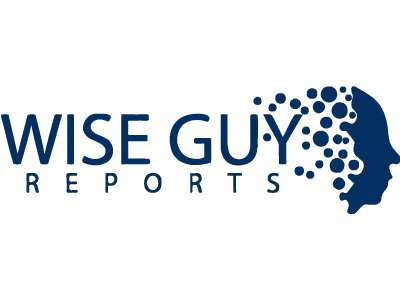Chemicals Industry Today
Soy Based Spray Foam Insulation Market Projected to Expand at 6.16% CAGR, Surpassing USD 3.7 Billion by 2032
The global soy-based spray foam insulation market is gaining significant momentum as sustainability takes center stage across industries worldwide. This innovative insulation solution, derived from renewable soy-based polyols, is disrupting the traditional insulation landscape with its superior environmental profile, enhanced thermal efficiency, and versatility in application. Backed by increasing environmental regulations, rising demand for energy-efficient buildings, and growing consumer awareness, the soy-based spray foam insulation market is poised for remarkable expansion over the next decade.
Market Overview and Size
According to recent market research insights, the global soy-based spray foam insulation market size was valued at approximately USD 2.16 billion in 2023. The market is forecasted to expand at a compound annual growth rate (CAGR) of around 6.16% between 2024 and 2032, potentially reaching a valuation close to USD 3.7 billion by the end of the forecast period.
This growth trajectory reflects the mounting demand for eco-friendly building materials amid tightening energy efficiency mandates, especially in the construction and retrofitting sectors. Soy-based spray foam insulation provides superior thermal insulation properties while significantly reducing carbon footprints compared to conventional petroleum-based foam insulations, which is a key driver of its adoption.
Download Exclusive Sample Copy of this Report here: https://www.wiseguyreports.com/sample-request?id=565387
Market Drivers and Trends
- Growing Sustainability and Regulatory Pressures:
- Governments worldwide are enforcing stricter building codes focused on energy conservation and environmental sustainability. This has propelled builders, contractors, and homeowners to seek greener alternatives. Soy-based spray foam insulation, with its renewable origin and low Global Warming Potential (GWP), aligns perfectly with such mandates.
- Energy Efficiency and Cost Savings:
- The insulation’s excellent R-value (thermal resistance) ensures enhanced energy conservation by minimizing heat loss or gain, leading to significant cost savings on heating and cooling over a building's lifecycle. The return on investment attracts commercial and residential segments alike.
- Rising Demand in Residential and Commercial Construction:
- Urbanization and infrastructural growth in emerging economies such as China, India, and Brazil present lucrative opportunities. These regions are witnessing a surge in green building projects, increasing soy-based spray foam insulation demand.
- Advancements in Soy-Based Formulations:
- Continuous R&D efforts focus on improving foam performance, such as faster curing times, greater durability, and enhanced fire retardancy. These improvements further boost market acceptance.
Segmentation Insights
The soy-based spray foam insulation market can be segmented on the basis of type, application, and region.
- By Type:
- Open-cell spray foam insulation
- Closed-cell spray foam insulation
- Closed-cell variants hold a dominant share due to higher density, superior moisture resistance, and enhanced structural strength, making them ideal for roofs, walls, and floors.
- By Application:
- Residential Buildings
- Commercial Buildings
- Industrial Facilities
- The residential segment commands the largest share, driven by consumer preferences for sustainable homes and incentives for green building certifications.
Regional Analysis
- North America:
- The region leads the global market, accounting for more than 35% of revenue share. The U.S. and Canada’s advanced construction sectors, coupled with stringent environmental regulations and high consumer awareness, fuel market growth.
- Europe:
- Europe ranks second, with countries like Germany, France, and the UK aggressively promoting sustainable construction practices. The EU’s Green Deal and energy efficiency directives bolster soy-based insulation adoption.
- Asia-Pacific:
- Expected to register the highest CAGR over the forecast period, Asia-Pacific’s rapid urbanization and infrastructural investments drive market expansion. Nations such as China, India, Japan, and Australia are pivotal contributors.
- Rest of the World:
- Latin America and Middle East & Africa are emerging markets with increasing green building initiatives and growing awareness about eco-friendly construction materials.
Competitive Landscape and Key Players
The soy-based spray foam insulation market is moderately fragmented, with a blend of established chemical manufacturers, specialized insulation producers, and innovative startups. Leading companies are leveraging strategic collaborations, capacity expansions, and new product launches to consolidate their market positions.
Notable players include:
- IcyneneLapolla
- Synthesia Technology LLC
- Tosoh Corporation
- Stirling Ultracold
- Demilec USA (Div. of Mapei Group)
- National Spray Foam Insulation LLC
- Covestro
Continuous innovation and adherence to sustainability principles remain key competitive factors.
Buy Now & Get Exclusive Discount on this Report: https://www.wiseguyreports.com/checkout?currency=one_user-USD&report_id=565387
Challenges and Opportunities
While the soy-based spray foam insulation market presents promising prospects, certain challenges persist:
- Raw Material Price Volatility: Dependence on soy derivatives exposes manufacturers to agricultural commodity price fluctuations.
- Initial Cost Barriers: Although energy savings offset long-term costs, higher upfront expenses compared to traditional insulation may limit adoption in price-sensitive regions.
- Technical Limitations: Application expertise and curing conditions need optimization for consistent performance.
However, increasing R&D investments, government subsidies, and rising consumer preference for green homes offer substantial growth opportunities.
Future Outlook and Market Potential
Looking ahead, the soy-based spray foam insulation market is set to be a cornerstone in the global green building materials ecosystem. Its ability to deliver sustainability without compromising on thermal efficiency makes it an attractive option for new constructions and retrofit projects alike.
Advancements such as integration with smart insulation systems, improved bio-polyol blends, and expanded end-use applications will further unlock market potential. Additionally, expanding into emerging economies with tailored products and affordable solutions will be critical for sustained growth.
Translation of the Report in Different Languages:
大豆系スプレーフォーム断熱材市場 | Sojabasiertes Sprühschaum-Dämmstoffmarkt | Marché de l'isolation en mousse pulvérisée à base de soja | 대두 기반 스프레이 폼 단열재 시장 | 大豆基喷涂泡沫绝缘材料市场 | Mercado de aislamiento en espuma en spray a base de soja
Browse Related Reports:
Nickel Niobium Alloy Market | Japan | German | French | Korean | China | Spanish
Molybdenum Phosphide Market | Japan | German | French | Korean | China | Spanish
Medical Ultrasound Gel Market | Japan | German | French | Korean | China | Spanish
Oilfield Fracking Hose Market | Japan | German | French | Korean | China | Spanish
Optical Grade Silicon Market | Japan | German | French | Korean | China | Spanish
Share on Social Media



Other Industry News
Ready to start publishing
Sign Up today!








